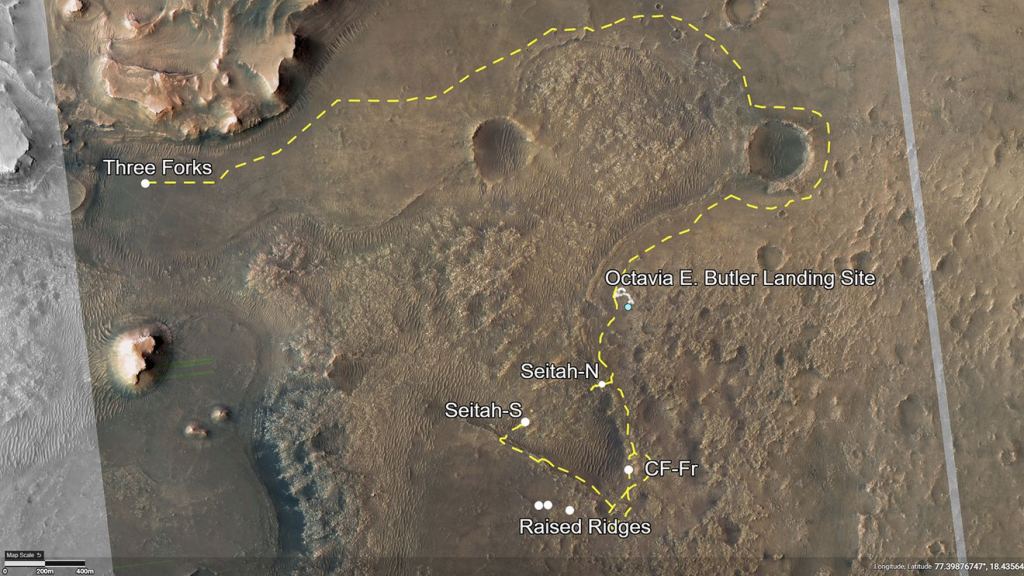It’s Time for Perseverance to get to Work
By Andy Tomaswick
Given all of the news surrounding the landing and first few months of operation of the Perseverance rover on Mars, it might be surprising that its actual science mission hasn’t even started yet. That changed on June 1st when the rover officially kicked off its first science mission by leaving its landing site.
UT has reported on a variety of firsts coming from the rover, including the first sound recordings on Mars, when it first zapped a rock with its laser, first use of its MOXIE experiment, and lately the trials and tribulations of the Ingenuity helicopter. But when all is said and done, there is still more science to do.
Credit: NASA / JPL-Caltech / ASU / MSSS
One big to-do on Perseverance’s task list is to collect samples that will eventually be returned to Earth on the first ever Martian sample return mission later in the decade. The rover is carrying 43 sample tubes that can be filled with interesting rocks or regolith that scientists want to take a closer look at.
Where those rocks and regolith come from is one of the most important considerations of the mission as a whole, and Perseverance’s first science mission will focus on two major areas of interest. The first stop will be the “Crater Floor Fractured Rough”, which hopefully will be blessed with a more whimsical name, if for no other reason than to make it easier on us science writers when talking about it in the future. For now, this stop can be thought of as the floor of the Jezero crater, where Perseverance landed. Almost 4 billion years ago it was covered with at least 100m of liquid water, and the geology of the region should reflect that much wetter past.
The more whimsically named second area of the trip is the Séítah unit. Meaning “admist the sand” in Navajo. Filled with rocks, ridges, and sand dunes, the area could potentially offer up a more recent geological history than the the samples found on the crater floor.
Navigating around these two areas of interest is no mean feat for a rover being controlled from millions of miles away, so mission scientists have drawn up an old school road map to help illustrate the path the rover intends to take. The overall route is expected to be between 2.5km and 5 km, and will end with a return to the “Octavia E. Butler” landing site, having left behind some samples for the return mission to pick up. From there the rover will transition into a second phase of science experiments, which will see it travel north and west to a delta region of the crater, where a river once flowed into the lake that used to occupy the area.

Credit : NASA / JPL-Caltech / University of Arizona
All of these areas could provide vital evidence for one of the big mission objectives of the rover – signs of life. It’s exactly these types of environments that evidence for any ancient life forms that might have lived on the wetter, warmer Mars, might still show up. Carbonates, which are common in the delta region, are known to have preserved fossils on Earth.
At this point, any such evidence is still wishful thinking, and even the collection of the samples that might eventually contain that evidence is still months away. But Perseverance is finally ready to take that first step – or wheel rotation – on the journey to collect even more data from the bottom of an ancient Martian lakebed.
Learn More:
JPL – Perseverance’s First Road Trip
JPL – NASA’s Perseverance Rover Begins Its First Science Campaign on Mars
UT – NASA’s Perseverance Rover: The Most Ambitious Space Mission Ever?
Lead Image:
Image of the Séítah unit from one of Ingenuity’s flights about 30m off the surface.
Credit: NASA / JPL-Caltech
The post It’s Time for Perseverance to get to Work appeared first on Universe Today.

June 13, 2021 at 08:05PM
via Universe Today read more...

Post a Comment